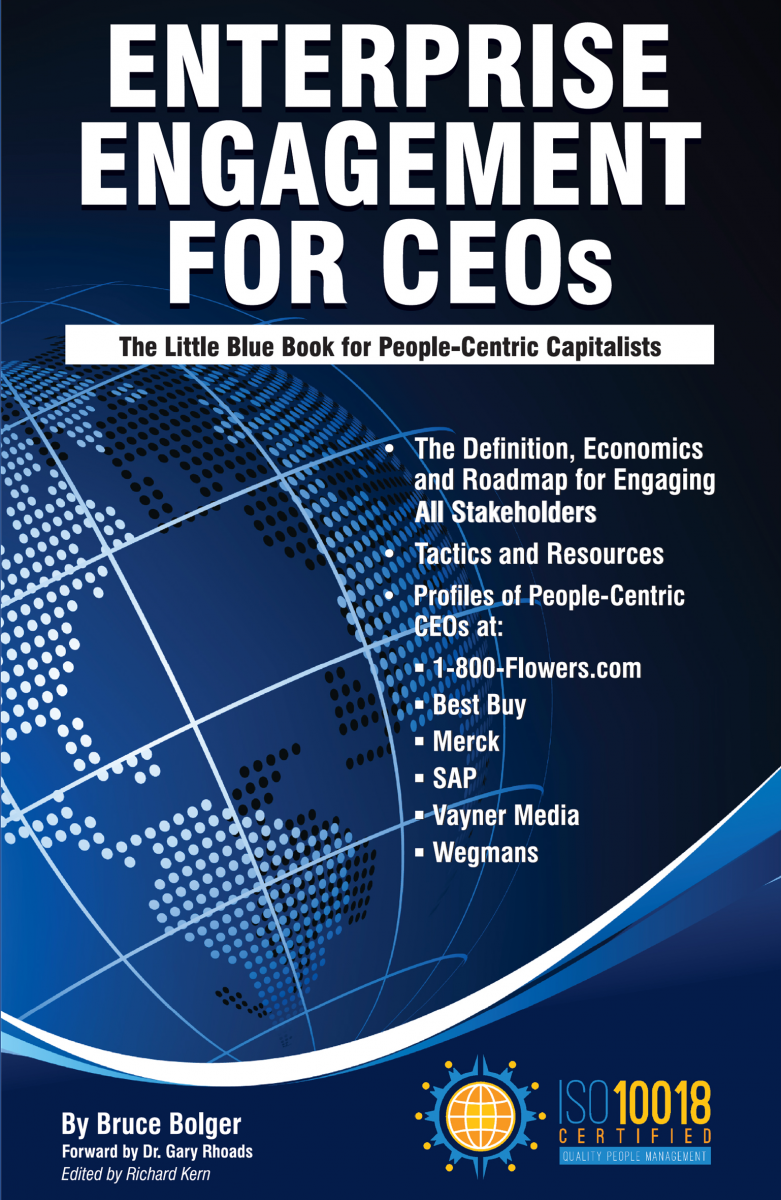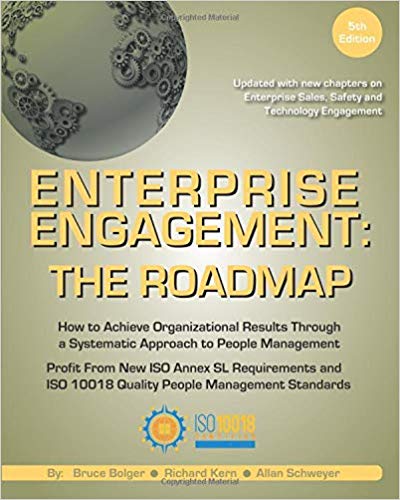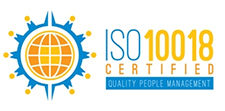 Gail Glazerman, a chartered financial analyst for the Sustainability Accountability Standards Board in San Francisco, writes in a recent blog that “the human capital dimension of sustainability has garnered increasing attention because of a growing number of labor actions, protests on behalf of contractors in the gig economy, the increasing number of teacher strikes, and increased focus on pay inequities and more."
Gail Glazerman, a chartered financial analyst for the Sustainability Accountability Standards Board in San Francisco, writes in a recent blog that “the human capital dimension of sustainability has garnered increasing attention because of a growing number of labor actions, protests on behalf of contractors in the gig economy, the increasing number of teacher strikes, and increased focus on pay inequities and more."
The issue of human capital continues to gain traction around the world, according to Gail Glazerman, author of a
recent blog post on the subject for the
Sustainability Accounting Standards Board, and not simply because of more calls for humanity in the workplace. “Investors are quick to note their interest in these matters is not purely altruistic. BlackRock has declared ‘profits are in no way inconsistent with purpose…Purpose guides culture, provides a framework for consistent decision-making, and, ultimately, helps sustain long-term financial returns for the shareholders of your company,’” writes Glazerman.
She continues, “BlackRock’s
annual letter to CEOs included human capital management among its engagement priorities for 2019. The letter asserts that 'attracting and retaining the best talent increasingly requires a clear expression of purpose. With unemployment improving across the globe, workers, not just shareholders, can and will have a greater say in defining a company’s purpose, priorities, and even the specifics of its business.'” Similarly, State Street’s
2019 proxy letter focused on corporate culture, noting ‘intangibles such as corporate culture are driving a greater share of corporate value.’”

Glazerman asserts that “in 1975, intangible assets accounted for only about 17% of market value—by 2015 this had
essentially inverted, with intangibles accounting for a dominant 84% of S&P 500 market value. This shift is at the core of SASB’s mission, to support improved disclosure of financially material, decision-useful sustainability information to investors. We believe the increased availability of consistent, comparable, reliable data will help investors better assess the value of these intangibles.”
Employee Engagement and Safety Are Key Performance Measures
The SASB standards, she reports, “cover
five main dimensions—Environment, Social Capital, Human Capital, Business Model and Innovation, and Leadership and Governance. Within the Human Capital dimension, SASB standards focus on Labor Practices, Employee Health and Safety, and Employee Engagement, Diversity and Inclusion. However, because each industry has its own unique sustainability profile, these issues encompass a broad range of impacts including employee turnover, collective bargaining, diversity, wages, and recruitment,” she adds.
-
"Recognize the importance of human capital management and incorporate the topic into its ongoing review of disclosure effectiveness, which is aimed at modernizing corporate reporting;
-
Aim to learn more from investors, issuers and the academic community…including what kinds of Human Capital Management disclosures are already required…with a view of minimizing marginal costs of compliance; and
-
Ensure any potential metrics are crafted so as to reflect the varied circumstances of different businesses, and to eschew simple ‘one-size-fits-all’ approaches.”
According to Glazerman, “During the debate on the recommendations, committee members acknowledged traditional financial reporting may fail to offer insight into the value drivers of intangible assets and expressed a desire to identify material issues that would be cost efficient for companies to report. The committee also defined an aim of increasing the comparability of human capital reporting across an industry, recognizing human capital impacts will vary significantly across different industries and thus a tailored solution is required.”
SEC Chairman: More Disclosures Needed, But Also More Study
She quotes the observation by the current SEC Chairman Jay Clayton. “If you look across our economy, the importance of human capital to the performance of firms has gone way up compared to 40 years ago,” Clayton has said. “So, I think we should be pushing in this direction, but to pick a metric around human capital that would be applicable across all aspects of our economy, you are going to be over inclusive, under inclusive, you are going to miss the mark.” Clayton later elaborated, “I also believe that our disclosure requirements and guidance must evolve over time to reflect changes in markets … the historical approach of disclosing only the costs of compensation and benefits often is not enough to fully understand the value and impact of human capital on the performance and future prospects of an organization.”
Glazerman believes the pressure is increasingly coming from other sources as well. The publication
Pension and Investments reported on a recent Senate hearing that focused on environmental, social, and governance (ESG) integration. During the meeting, the CEO of asset manager Calvert Research and Management noted ‘much of the information provided through voluntary disclosures is difficult to compare and inconsistent across issuers, resulting in considerable costs and resource expenditure for investors.’ And Ohio Sen. Sherrod Brown
declared “the SEC should act to require uniform disclosure of corporate ESG factors…Investors know there are many environmental, social or political risks that could reduce long-term value but companies are not providing that information. Enhancing and standardizing these disclosures will merely bring the SEC up-to-date with other rules around the world.”
She continues, “Just over a month later, in May, a subcommittee of the House Committee on Financial Services hosted a hearing touching on the topic of human capital disclosure. During the proceedings, Nili Gilbert, the co-founder of Matarin Capital Management,
observed that investment managers are seeking better understanding of material, non-financial information, arguing that such data is relevant to a broad swath of companies. She sought to dispel the notion that human capital information is too onerous for companies to collect. In support of a
proposed bill to amend the Securities Exchange Act of 1934 to require issuers to disclose information about human capital management in annual reports, Gilbert testified that standardized sustainability disclosures would lower the burden of reporting over time.” Glazerman says that Congresswoman Cynthia Axne of Iowa, sponsor of the House proposal, cited
research that found U.S. companies that voluntarily disclose investment in human capital outperform those that do not. In other words, reporting on these factors is not only helpful for investors but can be good business.”
Disclosures Do Not Have to Be a Burden
Glazerman clearly is pleased from the perspective of her organization, which can help organizations provide the information necessary for such disclosures. “The ideals that ran through the SEC committee meeting and the Senate, and House hearings are highly aligned with SASB’s work. As noted above, we have developed bespoke standards for 77 industries and have identified specific human capital issues that are reasonably likely to have material financial impacts on companies in more than half of those. Throughout our standards development and consultation process, SASB has focused on identifying metrics that are cost effective for companies to report, ideally in line with data they are already collecting.”
The author asserts that will the U.S. is still looking into this issue, “Many other governments—in the E.U., perhaps most notably—have already acted in terms of encouraging large corporations to report on sustainability issues. In fact, SASB standards are
recognized by the European Commission as a suitable framework for companies to use in providing such information to investors pursuant to the E.U.’s
Non-Financial Reporting Directive. In addition to other ESG matters, the directive specifically calls for the disclosure of information related to treatment of employees, respect for human rights, and diversity. The EU legislation may also be a bellwether for developments in other countries.”
In fact, SASB standards are
recognized by the European Commission as a suitable framework for companies to use in providing such information to investors pursuant to the EU’s
Non-Financial Reporting Directive. In addition to other ESG matters, the directive specifically calls for the disclosure of information related to treatment of employees, respect for human rights, and diversity. The E.U. legislation may also be a bellwether for developments in other countries.
The author concludes: “With this mounting interest—whether it’s due to a regulatory mandate or shareholder demand—companies are likely to come under increasing pressure to provide data on human capital management. This does not need to be a burden.”
Master the Principles of Enterprise Engagement to Achieve Organizational Goals and Enhance Your Career
-
Profit from a new strategic and systematic approach to engagement to enhance your organization’s brand equity; increase sales, productivity, quality, innovation, and safety, and reduce risks.
-
Get trained to become a Chief Engagement Officer for your organization.
-
Achieve ISO 10018 Quality People Management Certification to demonstrate your organization’s strategic commitment to people to your customers, employees, distribution partners, vendors, communities, investors, and regulators.
-
Learn how to create Sustainability or Integrated Reports for Your Organization or Clients.
-
Get up-to-speed on ISO human resources standards and guidelines to enhance HR performance.
Live Education: Enterprise Engagement in Action. Take advantage of scheduled monthly live webinar preparation courses for the Certified Engagement Practitioner designation consisting of three one-hour classes and of quarterly Advanced Engagement Practitioner courses consisting of three one-hour webinar classes. The AEP course is for individuals or teams seeking preparation ISO 10018 professional certification status. ICEE periodically runs regional one-day workshops on ISO 10018 Quality People Management principles and certification.
Resources: The Brand Media Coalition, the only guide to the story-telling power of brands and where to source them for business, event, promotional gifting, and rewards and recognition. 2019 Enterprise Engagement Solution Provider Directory. The only directory of engagement solution providers covering all types of agencies and tactics as well as insights on how to select them.
Communities: The Enterprise Engagement Alliance and Advocate and the Brand Media Coalition free resource centers offering access to the latest research, news, and case studies; discounts, promotions, referrals, and commissions, when appropriate to third-party solution providers from participating coalition solution provider members.

In Print:
Written specifically to provide CEOs and their leadership teams a concise overview of the framework, economics, and implementation process of a CEO-led strategic and systematic approach to achieving success through people. (123 pages, $15.99)
Enterprise Engagement: The Roadmap 5th Edition
The first and most comprehensive book on Enterprise Engagement and the new ISO 9001 and ISO 10018 quality people management standards. Includes 36 chapters detailing how to better integrate and align engagement efforts across the enterprise. (312 pages, $36.)
 Online:
Online:
• 10-minute short course: click here for a 10-minute introduction to Enterprise
• Engagement and ISO standards on Coggno.com.
• 5-minute Audiopedia summary of the Enterprise Engagement field.
Services:
• The International Center for Enterprise Engagement at TheICEE.org, offering: ISO 10018 certification for employers, solution providers, and Enterprise Engagement technology platforms; Human Resources and Human Capital audits for organizations seeking to benchmark their practices and related Advisory services for the hospitality field.
• The Engagement Agency at EngagementAgency.net, offering: complete support services for employers, solution providers, and technology firms seeking to profit from formal engagement practices for themselves or their clients, including Brand and Capability audits for solution providers to make sure their products and services are up to date.
• C-Suite Advisory Service—Education of boards, investors, and C-suite executives on the economics, framework, and implementation processes of Enterprise Engagement.
• Speakers Bureau—Select the right speaker on any aspect of engagement for your next event.
• Mergers and Acquisitions. The Engagement Agency’s Mergers and Acquisition group is aware of multiple companies seeking to purchase firms in the engagement field. Contact Michael Mazer in confidence if your company is potentially for sale at 303-320-3777.
Enterprise Engagement Benchmark Tools: The Enterprise Engagement Alliance offers three tools to help organizations profit from Engagement. Click here to access the tools.
• ROI of Engagement Calculator. Use this tool to determine the potential return-on-investment of an engagement strategy.
• EE Benchmark Indicator. Confidentially benchmark your organization’s Enterprise Engagement practices against organizations and best practices.
• Compare Your Company’s Level of Engagement. Quickly compare your organization’s level of engagement to those of others based on the same criteria as the EEA’s Engaged Company Stock Index.
• Gauge Your Personal Level of Engagement. This survey, donated by Horsepower, enables individuals to gauge their own personal levels of engagement.
For more information, contact Bruce Bolger at Bolger@TheEEA.org, 914-591-7600, ext. 230.
[return to top]
 Gail Glazerman, a chartered financial analyst for the Sustainability Accountability Standards Board in San Francisco, writes in a recent blog that “the human capital dimension of sustainability has garnered increasing attention because of a growing number of labor actions, protests on behalf of contractors in the gig economy, the increasing number of teacher strikes, and increased focus on pay inequities and more."
Gail Glazerman, a chartered financial analyst for the Sustainability Accountability Standards Board in San Francisco, writes in a recent blog that “the human capital dimension of sustainability has garnered increasing attention because of a growing number of labor actions, protests on behalf of contractors in the gig economy, the increasing number of teacher strikes, and increased focus on pay inequities and more." Glazerman asserts that “in 1975, intangible assets accounted for only about 17% of market value—by 2015 this had essentially inverted, with intangibles accounting for a dominant 84% of S&P 500 market value. This shift is at the core of SASB’s mission, to support improved disclosure of financially material, decision-useful sustainability information to investors. We believe the increased availability of consistent, comparable, reliable data will help investors better assess the value of these intangibles.”
Glazerman asserts that “in 1975, intangible assets accounted for only about 17% of market value—by 2015 this had essentially inverted, with intangibles accounting for a dominant 84% of S&P 500 market value. This shift is at the core of SASB’s mission, to support improved disclosure of financially material, decision-useful sustainability information to investors. We believe the increased availability of consistent, comparable, reliable data will help investors better assess the value of these intangibles.”
 Online:
Online: 














